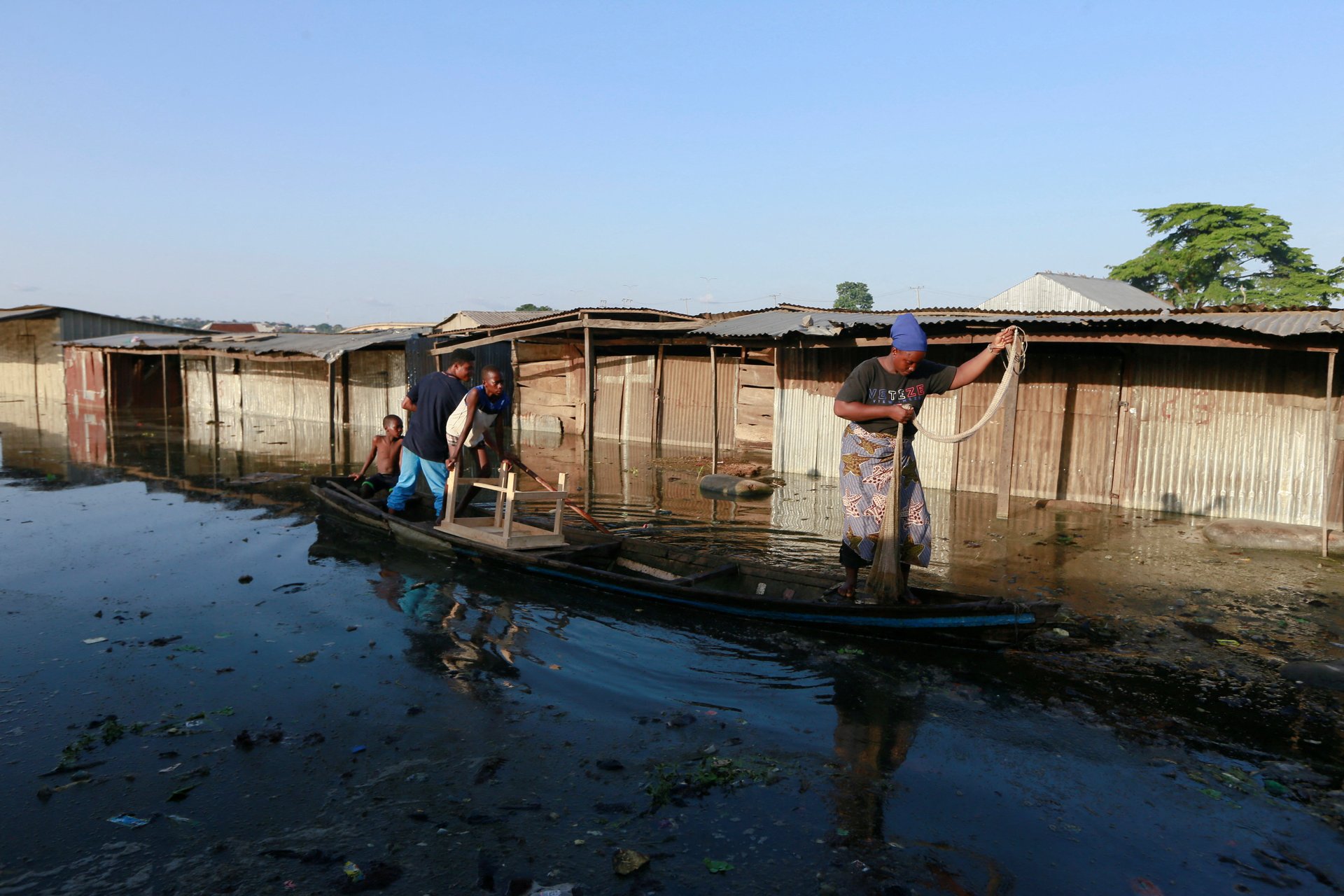Nigeria's worst floods in a decade have displaced over a million people
Over 70 people died in one southeastern state, with government minister warning of more floods to come.

Severe floods in Nigeria since September have caused the deaths of over 600 people and displaced 1.3 million from their homes, according to a government minister, in the most devastating episode of seasonal floods Nigeria has seen in a decade.
Heavy rains combined with poor urban planning have made parts of Nigeria more susceptible to flooding.
Around the River Niger bridge which joins Lagos to Onitsha and the rest of eastern Nigeria, sizable portions of surrounding communities have been submerged under water, crippling economic activity for many small traders and farmers. The situation has been so dire that Sadiya Umar Farouq, Nigeria’s minister of humanitarian affairs, has asked five state governments to prepare to evacuate residents living along flood plains. In Anambra, one of those states, 76 people died trying to flee the flood after an escape boat capsized.
More than 200,000 houses and 266,000 acres of farmland have been completely or partially damaged, the minister said on Oct.16, warning states to “prepare for more flooding” and provide “medical supplies for a possible outbreak of water-borne diseases.”
Another year of failing to prepare hurts Nigeria
The last major flood emergency was between July and October in 2012, when the Niger and Benue rivers overflowed their banks. The reported death toll at the time was under 500, but it displaced a similar number of people as this year’s.
But in addition to state governments failing to prepare early for seasonal floods, this year’s events have also been blamed on the release of excess water from Cameroon’s Lagdo dam in the middle of September. Nigeria does not have a buffer dam to prevent this flow though this need has existed since 1982 when the Lagdo dam was completed.
In the absence of adequate prevention, Nigeria succumbs to the damage of these floods, resorting to the disbursement of relief items as its main response. 12,000 metric tons of food from Nigeria’s reserves will be sent to affected communities, following president Muhammadu Buhari’s approval. But government efforts are hardly attending to the scale of damage unfolding around the country. In some communities, individuals have started online and offline fundraising campaigns to crowdsource relief.
Some big agricultural businesses are feeling the heat and that could increase food prices in the coming months. Olam Nigeria, which produces a quarter of Nigeria’s rice, says 10,000 acres of its farmland have been submerged, leading to a shortfall that could raise prices. “We should expect an increase in rice prices in December. Of course, that goes without saying, because the entire crop has been lost,” said Ade Adefeko, the company’s vice-president for corporate and government relations.
